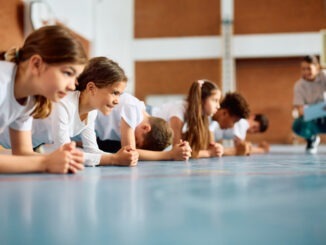As reported by Careers and Enterprise, despite efforts to inspire female entrepreneurship and challenge gender stereotypes in schools, new data reveals that girls consistently lag behind boys in considering earning potential and career readiness, emphasising the need for more inclusive career education
The partners in the new project are The CEC, the national body for careers education, The ScaleUp Institute, Founders 4 Schools and the Women-led High Growth Entrepreneur Taskforce.
The CEC asked more than 100,000 students: “Do you know how to find out how much you could earn in different types of jobs?” Across every year group, fewer female students responded positively (a consistent 9-10%pts difference).
Concerningly, the difference is largest when students are making key decisions about their future career – when they are choosing what GCSEs to take (Year 8), or starting to thinking about what to do after their GCSEs (Year 10).
Nicky Morgan, Chair of the Careers & Enterprise Company said:
“Women in business, and as top earners in senior positions, are still in a minority. The female students of today, are the female success stories of tomorrow, so it’s vital that schools and colleges are sharing empowering, inspiring examples of women who have made it in their chosen field.”
Baroness Morgan, who was Women and Equalities Minister from 2014-2016, continued:
“Female students report, on average, lower career readiness than their male peers. We are delighted to be working with the ScaleUp Institute and Founders4Schools on a joint venture to get more female entrepreneurs into schools because gender should not be a barrier to students’ career readiness.”
The Careers and Enterprise Company data reveals that:
Across every year group, female students score, on average, lower than their male peers on being well-prepared for jobs.
- Apart from Year 11 students (where girls out-perform disadvantaged boys), career readiness was lower for girls than boys. The gap is even greater for disadvantaged girls (those who get Free School Meals).
- Students’ job interests are prone to gender-bias. The research shows that jobs in “Sport & Leisure” tend to be more attractive to male students, while careers in “Animal Care” or “Travel & Tourism” tend to be more attractive to female students. These roles are not only gender-stereotyped, but are also over-subscribed, blunting opportunity.
- Strong careers provision (which we measure using Gatsby Benchmarks) has a positive impact on students’ career readiness and hence their interests, supporting them to navigate their career choices more effectively.
- Strong careers provision makes a difference and is starting to break down gender-bias around job choices.
- Students with the highest career readiness were more than twice as likely to have ideas about which industries they want to work in. These interests were two times less likely to be influenced by gender-bias and two times less likely to be in over-subscribed sectors.
- Girls who felt fully ‘career ready’ were two times more likely to choose careers in areas like engineering.




Be the first to comment